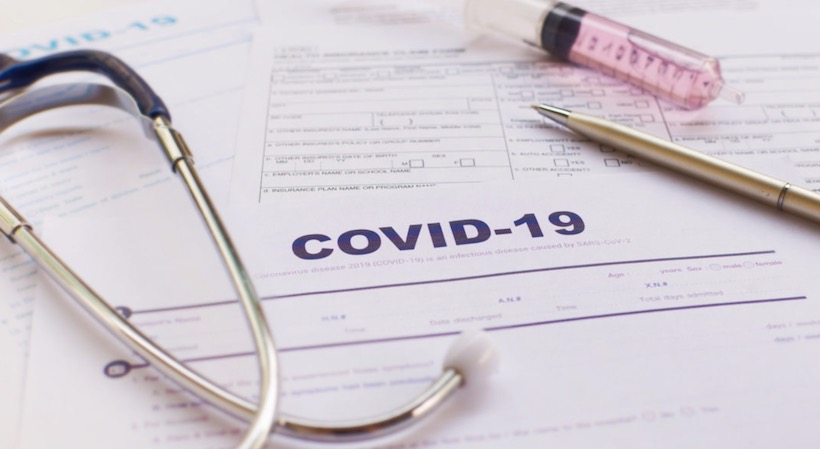This article was updated on March 27, 2020, with the current state of the SBA Disaster Assistance in response to the coronavirus (COVID-19), what’s included within the $2 trillion aid package, when we can expect the aid to be available, and the process for applying for the relief.
The SBA Disaster Assistance bill (CARES) that includes $367 billion in low-interest SBA loans was voted on by the House of Representatives and signed by President Trump this afternoon (3/27/2020). Over the coming weeks those funds will be made available to small businesses impacted by COVID-19.
This is good news for small businesses all across the country. The key takeaway for business owners today is funds are coming, and we should see them available over the coming weeks.
StartupNation exclusive discounts and savings on Dell products and accessories: Learn more here
What will this mean for the average small business?
The good news is that the amount of capital being made available to small businesses has increased from the original $50 billion called for by President Trump a couple of weeks ago to $367 billion to keep employees on the payroll who need to stay home or shelter in place (up to eight weeks of assistance for qualifying small businesses).
It also appears that small businesses will be able to defer their payroll taxes until 2021 or 2022.
The straight scoop is that this legislation is complex, the SBA loan guarantees will likely not be available immediately, (expect at least a few weeks), and the details of how the low-interest loans will be distributed is yet to be determined in detail.
The SBA has never been tasked with disaster relief of this scope, so loan guarantees that are to be distributed through the 7(a) loan program will be expanded to include other lenders determined by the SBA and the Secretary of the Treasury “…to have the necessary qualifications to process, close, disburse and service loans made with the guarantee of the Administration.”
Nav will be helping business owners apply for the SBA loans through our online portal and lenders like Nav’s partner SmartBiz, who already help business owners get SBA loans through the 7(a) program, will be working hard to get funds flowing as quickly as possible.
Related: WJR Business Beat with Jeff Sloan: The Impact of Coronavirus COVID-19 on Businesses (Episode 10)
Who is eligible?
The devil is often in the details, so it will be critical for every small business owner to understand the scope of the loan guarantee program and what the qualification criteria will include.
The qualifying criteria for small businesses applying for the financing will see some changes and could differ depending on your SBA lender:
- Businesses with fewer than 500 employees (with some exceptions)
- Businesses that in operation on and before February 15, 2020
- Businesses that meet the SBA’s industry-based size standard requirements for the applicable NAICS code, which are based either on number of employees or annual receipts
- Not-for-profits (except those receiving Medicaid funds)
- Veterans organizations
A business applying for the assistance will need to demonstrate that they had employees and were making payroll prior to February 15th with payroll receipts and other financial records.
Franchises and hospitality businesses (NAICS code 72) with multiple locations, even if they have more than 500 employees, may be exempted on a per location basis as well as any businesses receiving financial assistance from a Small Business Investment Company (SBIC).
How much can you apply for?
The maximum loan amount will be the lesser of $10 million and 2.5 times the average monthly payroll costs for the one year period before the loan is made, with consideration for any seasonality-based adjustments or a shorter period for businesses less than a year old.
The maximum loan amount for an SBA Express Loan has been raised from $350,000 to $1 million through December 30, 2020. In 2021 the maximum loan amount will drop back to $350,000.
Fees for Veterans applying for a 7(a) Express Loan are permanently waived.
The maximum loan term will be up to 10 years and the Secretary of the Treasury, in consultation with the SBA, will set guidance on interest rates and other terms and conditions of the program. Currently, interest rates are negotiated between the SBA lender and the borrower, based upon the Prime Rate or the SBA Peg Rate with a cap.
Interest payments will be deferred for the period of one year.
These loans are eligible for forgiveness, but the details here are important to understand so you don’t find your business in trouble.
The loan will be eligible for forgiveness in an amount (not to exceed the principal amount of the loan) equal to the sum of: (i) payroll costs, (ii)rent, (iii) utilities payments, and (iv) interest payments on secured debt obligations (including mortgages) incurred in the ordinary course of business prior to February 15, 2020, in each case, paid during the eight-week period commencing on the date of origination of the loan. The amount of loan forgiveness will be reduced by any reductions in employee wages (in excess of 25 percent for any employee) or a reduction in the number of employees during the covered period in accordance with the terms of the program. Borrowers will not recognize any cancellation of indebtedness income upon forgiveness of any portion of the loan for tax purposes. A borrower will be required to submit a fulsome application in support of loan forgiveness directly to the lender. The lender will make a determination on the application (subject to a statutory safe harbor) within 60 days of receipt; within 90 days after the loan forgiveness amount has been determined, the SBA will reimburse the lender directly for the principal amount of any forgiven debt, plus interest accrued through the date of repayment. SBA will issue additional implementation guidance and regulations regarding the loan forgiveness process within 30 days after enactment of the CARES Act.
In other words, there are conditions for which some loan forgiveness is available, but don’t assume forgiveness is automatic and any forgiveness (if available) will be based upon factors like your payroll costs, rent, utilities, and interest payments on debts you had previous to receiving the aid—and will go through a review with the lender.
Canceled indebtedness will not be included in the borrower’s taxable income.
Loan proceeds do have some restrictions. Payroll, rent, utilities, and sick leave are among the approved uses for the funds. They may also be used to make interest payments on other debt that was incurred before the February 15, 2020 deadline.
The loans will be unsecured and will not require a personal guarantee. This is great news for business owners who lack collateral and also may have a subpar personal credit score that may have precluded them from low-interest SBA loans in the past.
The deadline for applying is June 30, 2020.
The loans covered in this bill will be treated differently than the Economic Injury Disaster Loans, including a Grant for those who apply for the disaster loans.
The Economic Injury Disaster bill establishes an Emergency Grant to allow eligible businesses that apply for an Economic Injury Disaster Loan (EDIL loan) to request an advance on that loan, of not more than $10,000, which the SBA must distribute within 3 days. The SBA will not require applicants to repay any advance payments, even if they subsequently are denied an EIDL loan.
In other words, small businesses that are eligible to apply for the Economic Injury Disaster Loan will be able, within 3 days, to access up to $10,000 without a requirement to make payment, even if their disaster loan application is denied.
The Emergency EIDL Grants will terminate on December 30, 2020.
You can learn more on how to apply for those here.
What if you need funding faster?
If you need access to capital before these funds become available, there are options for creditworthy borrowers.
Disaster relief already allocated
Congress has already allocated $8.3 billion to assist small businesses battling the coronavirus as part of an emergency spending package that was passed on March 4. New, relaxed criteria is designed to encourage:
- A faster and easier qualification process for states seeking SBA disaster assistance: The new criteria requires states or territories to certify that at least five small businesses have suffered economic injury, regardless of where the businesses are located. The previous requirement was more restrictive based on the county/parish.
- Expanded, statewide access to the Disaster Assistance loans for small businesses: Under the revised criteria, the assistance will be available statewide following the economic injury declaration and will apply to current and future declarations related to the coronavirus. Previously these declarations would have only been available within counties identified by a Governor.
Nav’s Education Director Gerri Detweiler is in close touch with SBA officials and applications for these disaster loans are already flooding into the SBA. The sooner you can get your own application in, the faster you’ll be “in line” to have your application approved. We strongly urge you to get in line, even if you don’t need the funds once your application comes up for review.
If you would like more information, you can contact the SBA disaster assistance customer service center at 1-800-659-2955 (TTY: 1-800-877-8339) or email to [email protected].
Zero percent APR business credit cards
If you need access to capital quickly, a business credit card can be a good option. Especially given the recent cuts to the Prime Rate by the Federal Reserve, which means credit card APRs will likely lower in the next few weeks.
However, issuers are beginning to update lending restrictions and tighten and even close new applications for some business credit cards. There are still some issuers approving customers for 0 percent APR business credit cards that could help your business access needed capital to meet budget shortfalls during the health crisis.
A business line of credit
A business line of credit is a time-tested way for a small business to have quick access to cash to meet an unanticipated need. The upside of a line of credit is you pay for what you borrow, but know the full line is available if you need it — a good option for business owners who haven’t been hit yet, but want to be prepared nonetheless.
If you already have a line of credit, Nav is already talking with customers who have seen their total credit lines cut, so we encourage you to take a draw now before the funds are unavailable. This is a precaution, and one we wouldn’t normally recommend if we didn’t anticipate continued tightening among business lenders.
A business term loan
The short applications and quick decision-making make it easier than ever for a small business to apply for an online term loan. An application can often be completed in a matter of minutes with an answer in 24 hours or less. What’s more, funds can be electronically deposited in your account within days. While many of these lenders have ceased lending in the past few days, some are already re-opening for applications.
As lenders change their credit requirements to adjust to the current conditions caused by the coronavirus, we can help you evaluate your options and make decisions about what your short-term options are and help you prepare to apply for the SBA loan program.
This article originally appeared on Nav.com by Ty Kiisel






